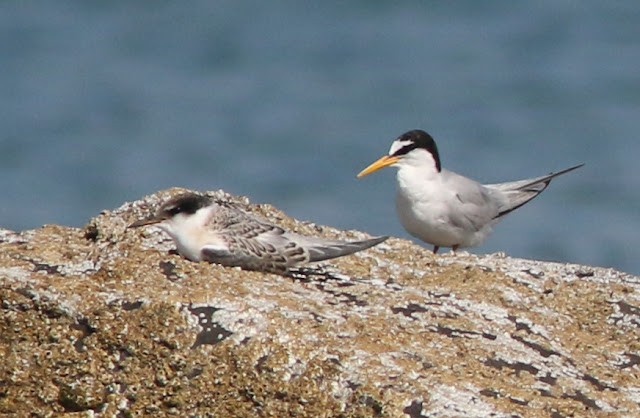Near Boolteens there's a new way-marked trail at Caherfealane which takes you past the marsh of the same name, also known as Caher Marsh, a spot which has turned up Spoonbill, American Golden Plover and a few other goodies over the years. However there is, it seems, a first Western Palearctic species awaiting the visitor.
The sign.
The new interpretive panel has a nice map of the route and, on the reverse, highlights six species of birds to be seen along the trail, i.e., Pheasant, Cuckoo, Shel Duck (sic), Greater Black-backed Gull, Curlew and Whimbrel. The mis-use of "Shel Duck" grabbed my attention and I went for a closer look. It was with a deep sigh and a predictably testy appearance of my alter-ego, 'Grumpy-Old-Pedantic-Git' that I noticed not only is the text riddled with errors and typos, double spaces and missed hyphens, the choice of species somewhat odd (Whimbrel is not at all regular there and Black-headed Gull is by far the commonest Gull all year), but the photo of Cuckoo is actually of a White-winged Dove, a species of pigeon confined to the southern United States and Central America and never recorded in Europe.
White-winged non-Cuckoo Dove.
This sort of public information problem crops up regularly enough. I recall some years ago seeing a sign for boat trips along the Cliffs of Moher which advertised and illustrated with photos, the wildlife likely to be seen - whales, dolphins, Puffins, White Terns... What? White Terns? Maybe if you were on Ascension Island in the South Atlantic...
And at Caherfealane not only can you treat yourself to a first Western Palearctic bird, but you can then treat yourself to a Curley.
Curley Whimbrel.
The Whimbrel photo looks like it is actually of a Hudsonian Whimbrel.
The sign and the trail are truly commendable and are a tremendous asset to the area - really, they are - but for heavens sake, the information could so easily have been checked. You have willing volunteers right here. Just contact us.
Grumpy-Old-Pedantic-Git signing off...


















